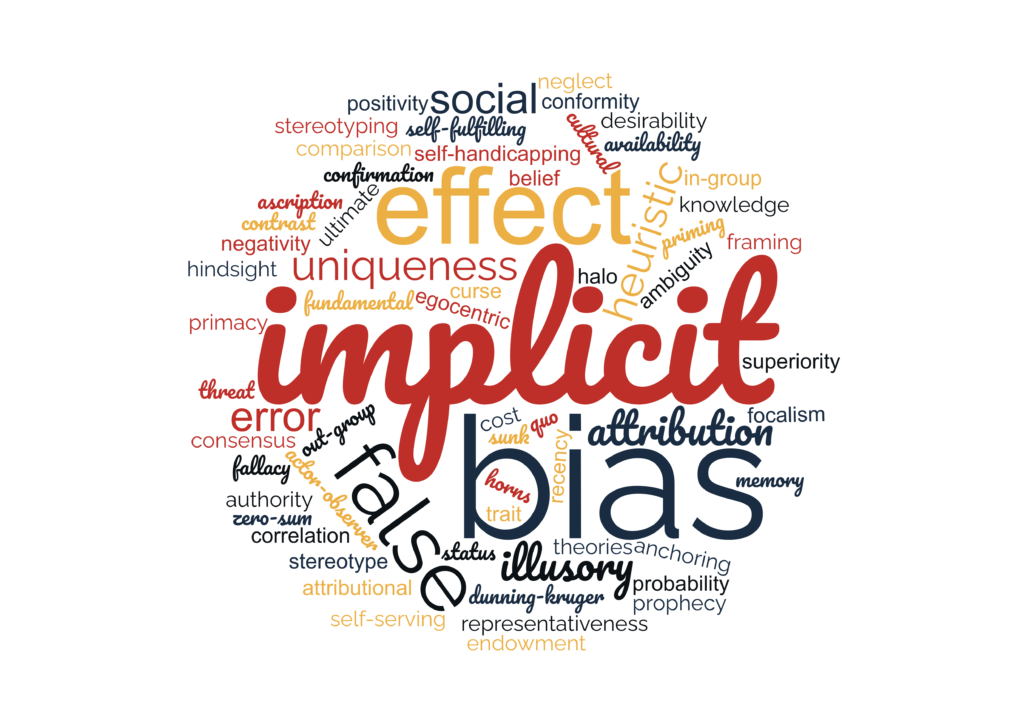Implicit bias refers to the attitudes or stereotypes that affect our understanding, actions, and decisions in an unconscious or automatic way. It’s the kind of bias that we may not even be aware of, yet it can have significant impacts on individuals and communities.

Here are five components of implicit bias that help to shed light on this complex and important issue:
- Automatic and Unconscious: Implicit bias operates on an automatic and unconscious level. This means that we may not be aware of the biases we hold, and they can influence our behavior and decision-making without our conscious awareness. For example, we may make assumptions about someone’s abilities based on their race or gender, without realizing that we are doing so.
- Learned and Socialized: Implicit biases are shaped by our socialization and the cultural norms and values that we are exposed to. We may internalize stereotypes or prejudices based on messages we receive from the media, our families, or our peers. This can happen even if we consciously reject those messages, highlighting the importance of ongoing self-reflection and education.
- Impactful and Widespread: Implicit biases can have significant impacts on individuals and communities. For example, they can affect hiring decisions, treatment by law enforcement, or access to healthcare. They can also perpetuate systemic inequalities and contribute to broader patterns of discrimination and oppression. Recognizing the pervasive nature of implicit bias underscores the need for intentional efforts to mitigate its effects.
- Malleable and Changeable: While implicit biases can be deeply ingrained, research suggests that they are also malleable and can be changed through deliberate efforts. This could include exposure to counter-stereotypical information, practicing perspective-taking, or implementing policies and practices that reduce the likelihood of implicit bias impacting decision-making. This recognition of the potential for change can be empowering and motivating for individuals and organizations committed to addressing bias and promoting equity.
- Multidimensional and Complex: Implicit biases are not one-dimensional and can manifest in different ways depending on a range of factors, including the context, the individual, and the target of the bias. For example, biases related to race may differ from biases related to gender or sexual orientation. Additionally, individuals can hold multiple and conflicting biases at the same time. Understanding the complexity and nuances of implicit bias can help us to approach the issue with greater nuance and sophistication.
One way that organizations can work to mitigate the effects of implicit bias is by putting business processes and enterprise architecture in place. This includes developing policies and procedures that are designed to minimize the influence of bias in decision-making, such as blind hiring processes that remove identifying information from resumes. Enterprise architecture can also be used to identify and address biases in the technology systems that organizations use, such as algorithms that may inadvertently perpetuate discriminatory patterns.
By integrating business processes and enterprise architecture that are designed to minimize the impact of implicit bias, organizations can promote more equitable decision-making and create a more inclusive and diverse workplace. This can lead to better outcomes for both employees and customers, as well as improving the overall reputation and success of the organization.
Recognizing and addressing implicit bias is an important part of creating a more just and equitable society. By understanding the automatic and unconscious ways in which bias can impact our behavior and decision-making, we can work to reduce its influence and promote more fair and objective decision-making. With the implementation of business processes and enterprise architecture, organizations can take concrete steps towards reducing the impact of implicit bias in their operations, and promoting more equitable outcomes for all.

